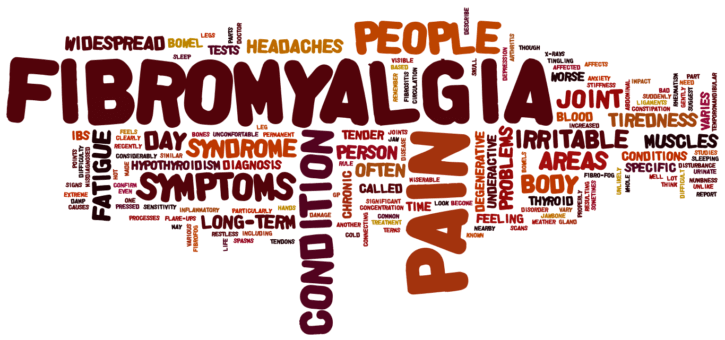What is fibromyalgia?

Fibromyalgia is a disorder of chronic, widespread pain and tenderness. It typically presents in young or middle-aged women but can affect patients of either sex and at any age.
Request an Appointment for consultation on Fibromyalgia right now!
What are the typical signs and symptoms?
- Persistent widespread pain greater than three months
- Stiffness
- Fatigue; disrupted and unrefreshing sleep
- Cognitive difficulties
- Multiple other unexplained symptoms, anxiety and/or depression, and functional impairment of activities of daily living.
Diagnosis
Fibromyalgia is a diagnosis of exclusion and patients must be thoroughly evaluated for the presence of other disorders that could be the cause of symptoms before a diagnosis of fibromyalgia is made. The clinical assessment may reveal objective evidence for a discrete or other illness, such as the following:
- Hypothyroidism
- Rheumatoid arthritis
- Systemic lupus erythematosus
- Polymyalgia rheumatic
- Other inflammatory or autoimmune disorders
- Serious cardiac conditions in those with chest pain, dyspnea, and palpitations
Laboratory testing
Although patients with fibromyalgia do not have characteristic or consistent abnormalities on laboratory testing, routine laboratory and imaging studies can help to rule out diseases with similar manifestations and to assist in diagnosis of certain inflammatory diseases that frequently coexist with fibromyalgia. Such tests include the following:
- Complete blood count with differential
- Metabolic panel
- Urinalysis
- Thyroid-stimulating hormone level
- ESR and anti-nuclear antibodies.
Treatment:
Currently there is no cure for fibromyalgia, but education, lifestyle changes, and proper medications can help the individual to regain control and achieve significant improvement.
Models of pain behavior that interrelate biologic, cognitive, emotional, and behavioral variables form the basis for cognitive-behavioral and operant-behavioral approaches to adult pain management.
The researchers made a considerable progress in understanding fibromyalgia. Recent advances in their understanding of the fundamental mechanisms underlying fibromyalgia (FM) have shown that there is a significant peripheral neuropathic component to this disorder.
Methods for recognizing FM itself have been the subject of numerous reviews, and have generated at least two sets of formal, diagnostic criteria. Until recently, there has been little in the way of agreement as to nature and cause for the constellation of peripheral findings seen in this disorder. The robustness of the reports of small fiber neuropathy (SFN) in FM suggests that SFN is likely to be a fundamental component of this malady. Further, once the SFN is placed in context, there arises the inevitable conclusion that many of the symptoms seen in FM are likely to be immune-mediated. Additionally, ongoing work suggests that another important lesion, a large fiber neuropathy, exists in FM. In combination, all of these considerations provide a reasonable schematic for planning the treatment and monitoring of the painful complaints in this disorder.
Skin biopsy is a safe, minimally invasive, painless and cheap tool for providing diagnostic information on SFN, which are invisible to routine neurophysiological tests. Biopsy can be performed in hairy skin to investigate unmyelinated and thinly myelinated fibers and in glabrous skin to examine large myelinated fibers. Morphometric analysis of skin nerves is readily accomplished through the use of immunohistochemical techniques, and has proved to be reliable, reproducible and unaffected by the severity of neuropathy. One further advantage of skin biopsy over conventional nerve biopsy is that it allows somatic nerve fibers to be distinguished from autonomic nerve fibers. Skin biopsy is considered in patients with symptoms of small-fiber neuropathy when nerve conduction studies do not reveal abnormalities. Once SFN has been diagnosed, focused screening (e.g. glucose tolerance test) and treatment of neuropathic pain or fibromyalgia can begin. Skin biopsy provides an opportunity to identify subclinical involvement of autonomic nerve fibers and degeneration of somatic nerves in neuropathies otherwise considered exclusively autonomic, leading to a better comprehension of symptoms and awareness of potential complications.
At Spine & Pain Clinics of North America we perform skin biopsy when needed. ![]() Call (703) 520-1031 to try the latest approach in treating fibromyalgia.
Call (703) 520-1031 to try the latest approach in treating fibromyalgia.
Article sources:
Giuseppe Lauria and Grazia Devigili et al (2007) “Skin biopsy as a diagnostic tool in peripheral neuropathy” published online
Xavier J. Caro & Earl F. Winter et al (2015) “The Role and Importance of Small Fiber Neuropathy in Fibromyalgia Pain”
Learn more about pain conditions
